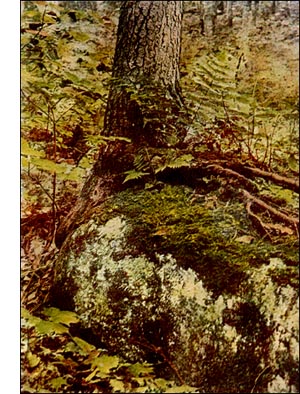Plagiothecium Muellerianum Moss
 Plagiothecium Muellerianum, Schimp.
Plagiothecium Muellerianum, Schimp.Habit and habitat.This moss is found in rocky ravines ; it grows in loose, bright and shining green tufts.
Name.-The specific name, Muellerianum, was given by William Schimper in honour of Baron Ferdinand Mueller, Government botanist of Australia.
Plant (gametophyte).-Very small ; stems with runners, creeping, with branches erect, rooting at the base and sometimes at the apex.
Leaves.-In two rows, spreading, concave, ovate-lance-shaped at the base, taper-pointed, with an abrupt, short, acute point ; margin
entire ; vein wanting ; base not growing down the stem ; cells narrow, uniform.
Leaves at the base of the Pedicel ( perichaetial leaves).-Half-clasping at the base, oblong-ovate, taper-pointed, entire.
Habit of flowering. -Male and female flowers on separate plants (dioicous).
Veil (calyptra).-Small.
Spore-case.Somewhat nodding, tapering from the enlarged mouth toward
the pedicel, long-necked, enlarged at the mouth and bell-shaped when dry.
Pedicel (seta).-Short, purple.
Lid (operculum).-Conical, short-beaked.
Teeth (peristome).-Distantly jointed, cilia short, robust, unequal.
Annulus.-Narrow, simple.
Spores.-The fruit is very rare.
Distribution.-Found in Europe and eastern North America.